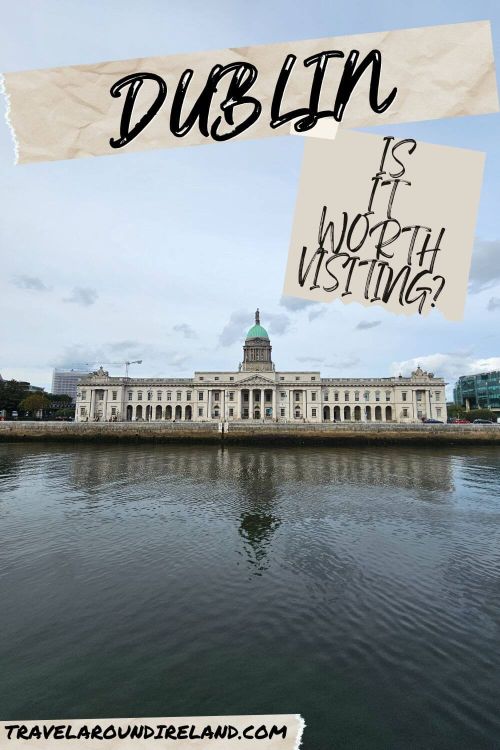Planning a trip to Ireland but unsure whether the capital city should be on your itinerary?
With its reputation for being both vibrant and touristy, Dublin often leaves travelers wondering: Is Dublin worth visiting, or should you skip it in favor of Ireland’s scenic countryside and quaint villages?
From centuries-old pubs and cobbled streets to world-class museums and a rich literary heritage, Dublin offers a unique mix of culture, history, and nightlife—if you know where to look.
This guide breaks down the real pros and cons of visiting Dublin, so you can decide for yourself whether it’s a must-see or a maybe-next-time.
By the end, you’ll have a clear picture of what to expect in Dublin and whether it deserves a spot on your Irish adventure.
- 5 Reasons to Visit Dublin
- Top Attractions in Dublin
- Dublin's Historical Significance
- Lively Pub and Food Scene
- Arts, Music, and Literature
- Local Events and Festivals
- Outdoor Activities and Green Spaces
- Day Trips From Dublin and Nearby Attractions
- Ideal Duration and Itinerary Suggestions
- Travel Tips for Visiting Dublin
- Challenges, Considerations and Potential Drawbacks
- Final thoughts if Dublin worth visiting?
5 Reasons to Visit Dublin
The Irish capital has so many things going for it that it’s hard to ignore. I might be biased as a Dubliner, but my hometown has so many things on offer for visitors that even a few days in the city can enrich any Ireland itinerary.
So, let’s look at a few of the reasons why you should visit Dublin.
1 Rich Historical and Cultural Heritage
Dublin’s streets are steeped in history that dates back over a thousand years.
Dublin Castle, which I’ve visited a few times, stands as a magnificent reminder of the city’s medieval past, with its stunning State Apartments and medieval undercroft. If you want a guided tour of the State Apartments, make sure you get there early in the morning as the tickets sell out fast.
Christ Church Cathedral, founded in 1028, captivates visitors with its beautiful architecture and fascinating crypt. St. Patrick’s Cathedral, Ireland’s largest church, offers breathtaking Gothic design and connections to Jonathan Swift, who served as Dean there. Both are equally great to visit and can be done in one go, as they are located very close to one another.
The city proudly holds UNESCO City of Literature status, having produced literary giants like James Joyce, Oscar Wilde, and Samuel Beckett. You can trace their footsteps through dedicated museums and landmarks across the city.
For history enthusiasts, EPIC The Irish Emigration Museum provides an interactive journey through the Irish diaspora story. Remember to stamp your EPIC passport in each room! The National Museum of Ireland houses treasures spanning thousands of years of Irish heritage, including spectacular Celtic artifacts. Just don’t view the Bog Men if you are squeamish at all.
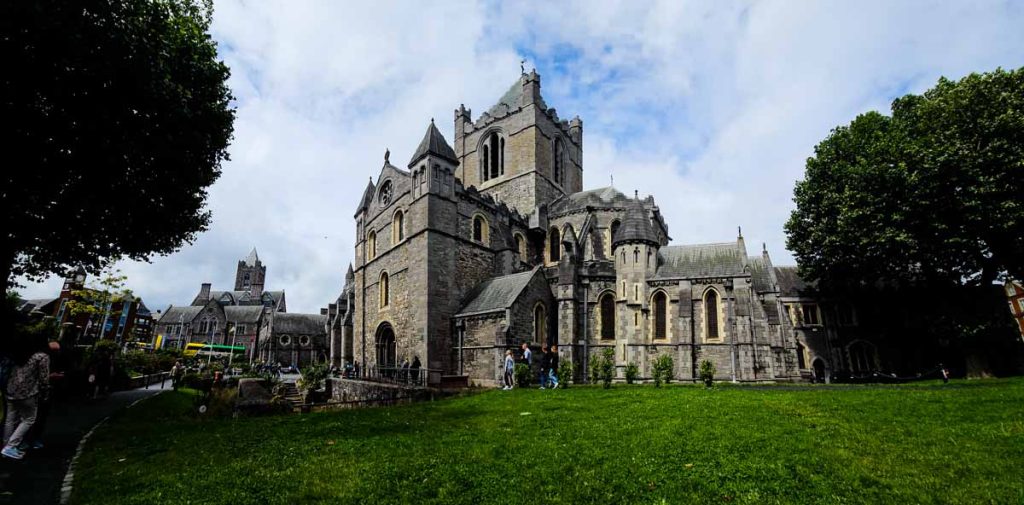
2 Vibrant Food and Drink Scene
Dublin’s culinary landscape has evolved dramatically in recent years, blending traditional Irish fare with international influences. You’ll find everything from hearty Irish stew to innovative fusion cuisine throughout the city.
The pub culture remains central to Dublin’s identity, offering more than just drinks. Traditional pubs serve excellent food in atmospheric settings where you can enjoy live music and friendly conversation with locals.
If you prefer fine dining, Dublin boasts several Michelin-starred restaurants that showcase Ireland’s exceptional local produce. The city’s food markets, like the Temple Bar Food Market, provide opportunities to sample artisanal products and fresh local ingredients.
3 Entertainment and Nightlife
Dublin pulses with energy after dark, offering entertainment options for every taste. Live music flows from countless venues, from traditional Irish sessions in cozy pubs to international acts at larger venues like 3Arena.
Street performers enliven areas like Grafton Street throughout the day, creating a festive atmosphere as you explore the city. The busking tradition has launched many Irish musical careers over the years.
Meanwhile, the Abbey Theatre, founded by W.B. Yeats, continues to showcase powerful Irish dramatic works, and the Gaiety Theatre presents a mix of musicals, opera, and ballet in a beautiful Victorian building.
If you are looking for lively nightlife, the Temple Bar district serves as the epicenter for this, with dozens of pubs and clubs packed into cobbled streets. While popular with tourists, locals also frequent areas like Camden Street (head to Flannery’s) and South William Street (Dakota, where my husband and I had our first date) for a more authentic night out. I can recommend Whelan’s on Wexford Street.

4 Accessibility and Walkability
Dublin’s compact city center makes it ideal for exploration on foot. Most major attractions sit within a 20-minute walk of each other, allowing you to maximize your sightseeing time.
The River Liffey divides the city into north and south sides, connected by numerous bridges, including the iconic Ha’Penny Bridge. This natural landmark helps you orient yourself as you navigate between attractions.
When your feet need a break, Dublin’s public transport system provides convenient options. The LUAS tram network connects key areas, while Dublin Bus offers comprehensive coverage across the city and suburbs.
For day trips, DART trains run along the scenic coastline, enabling easy access to charming seaside villages like Howth and Dalkey. These efficient transportation options make Dublin an excellent base for exploring the wider Dublin Bay area.
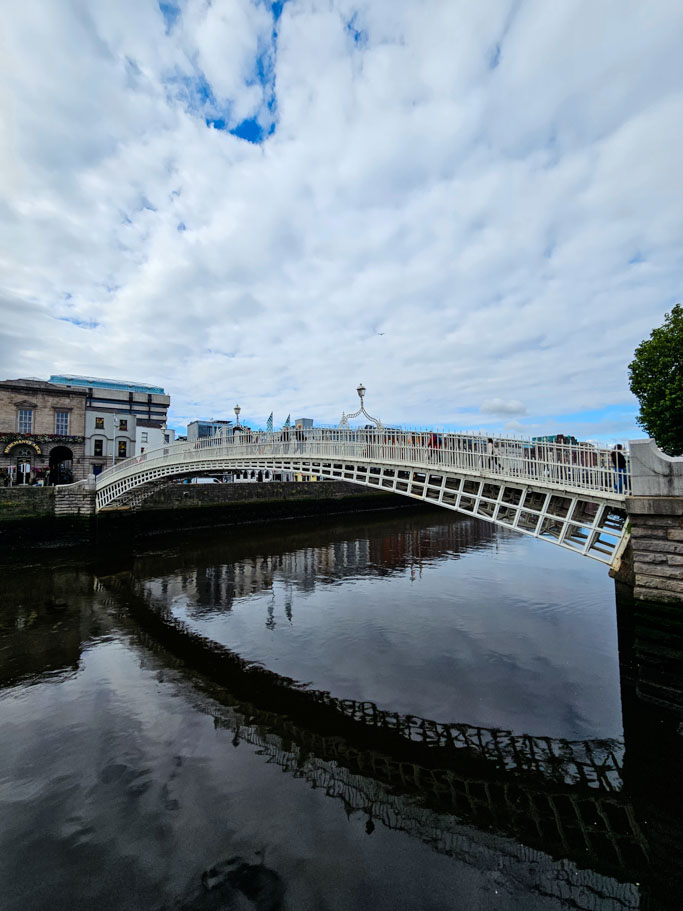
5 Family-Friendly Activities
The Phoenix Park, one of Europe’s largest urban parks, provides 1,750 acres of green space perfect for family outings. Within its boundaries, Dublin Zoo houses over 400 animals in naturalistic habitats, making it a guaranteed hit with children.
The National Aquatic Centre features exciting water slides and play areas that will keep children entertained for hours.
Dublin’s Viking Splash Tours combine sightseeing with adventure, using amphibious vehicles that travel on land before splashing into the Grand Canal. Kids particularly enjoy donning Viking helmets and roaring at pedestrians during this unique tour. And sometimes, it’s not just the kids roaring. I may have done so myself!
Top Attractions in Dublin
As well as historical landmarks a plenty, Dublin has many different attractions that showcase its rich history and vibrant culture. Here are just a few of them.
Trinity College and the Book of Kells
Trinity College stands as Ireland’s oldest and most prestigious university, founded in 1592 by Queen Elizabeth I. The campus itself is worth exploring with its cobblestone squares and historic architecture.
I spent many an afternoon in the main and science libraries while doing research for my PhD.
The main attraction here is undoubtedly the Book of Kells, an illuminated manuscript created around 800 AD, containing the four Gospels of the New Testament. This masterpiece of medieval art is housed in the Old Library, which also features the breathtaking Long Room.
The Long Room houses over 200,000 of Trinity’s oldest books beneath a barrel-vaulted ceiling. The space stretches nearly 65 meters in length, creating an awe-inspiring atmosphere that transports you back in time.
Visiting tip: Purchase tickets online in advance to avoid long queues, especially during summer months. Mornings tend to be less crowded.
Note: The Long Room is closing at the end of 2025 for restoration and renovation, so the Book of Kells exhibition is moving. But fear not, you can still see it within the grounds of Trinity College.
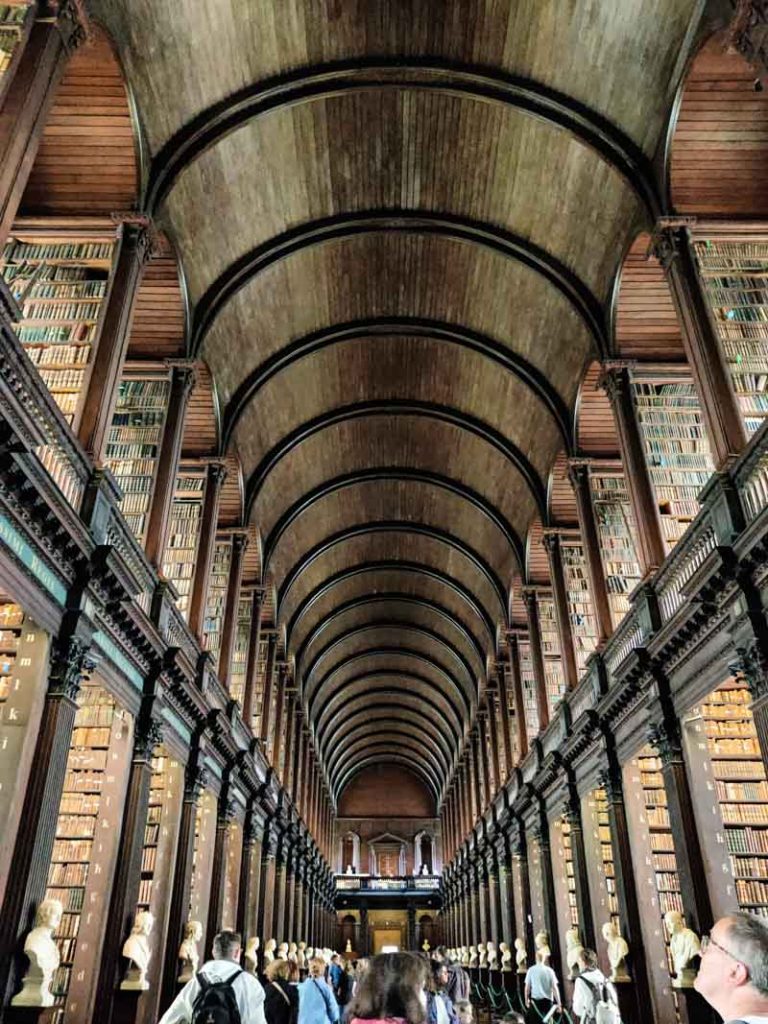
The Guinness Storehouse
Located at St. James’s Gate Brewery, the Guinness Storehouse has become Dublin’s most popular tourist attraction and was somewhere that eluded me until 2024!
This seven-story building tells the story of Ireland’s most famous export. Your self-guided tour begins in the central atrium, shaped like a giant pint glass. Each floor explores different aspects of Guinness’s history, brewing process, and advertising campaigns that made the brand globally recognized.
The highlight comes at the end of your visit—the Gravity Bar on the top floor. Here you’ll enjoy a complimentary pint of perfectly poured Guinness while taking in 360° views of Dublin’s skyline, provided it is not raining and overcast.
The experience includes interactive exhibits where you can learn to pour the perfect pint and receive a certificate of achievement. Allow approximately 1.5 hours to fully enjoy this immersive attraction.
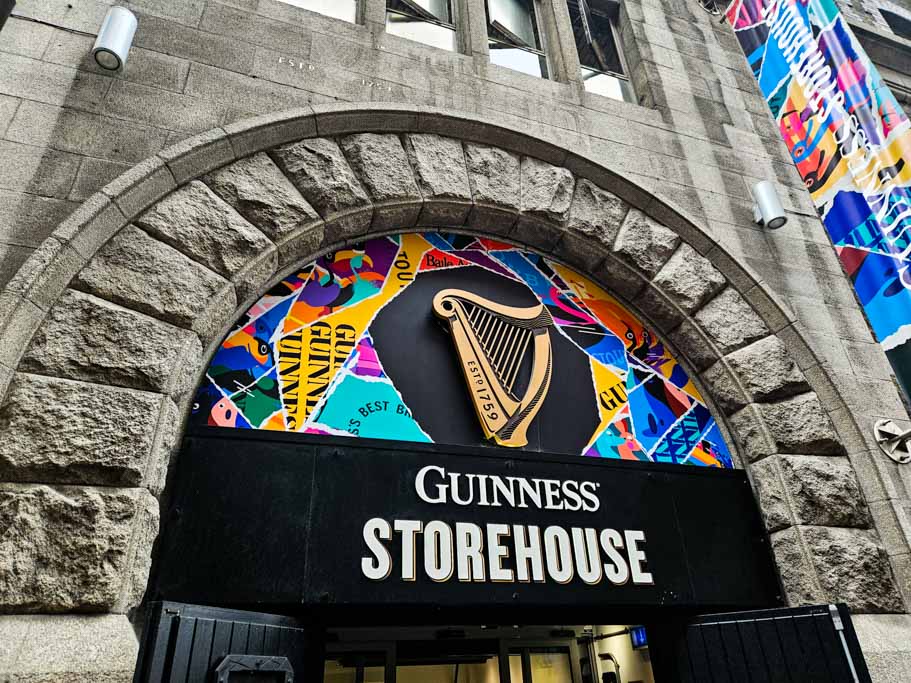
Dublin Castle
Dublin Castle served as the seat of British power in Ireland for over 700 years until Irish independence in 1922. Today, it functions as a government complex and major tourist attraction.
The castle grounds feature various architectural styles reflecting its long history. The Record Tower dates from medieval times, while the State Apartments showcase Georgian elegance with their ornate ceilings and rich furnishings.
Don’t miss the Chester Beatty Library within the castle complex, home to one of Europe’s finest collections of religious manuscripts, prints, and decorative arts from across the world. Its collection of Islamic and East Asian art is particularly impressive. It is so good, I’ve visited many times and never tire of the museum.
Guided tours of the castle offer access to the Viking excavation site beneath the castle, where you can see the remains of the original Viking fortress and subsequent Norman structures. These ruins provide fascinating insight into Dublin’s foundations. But be warned, guided tour tickets sell fast.
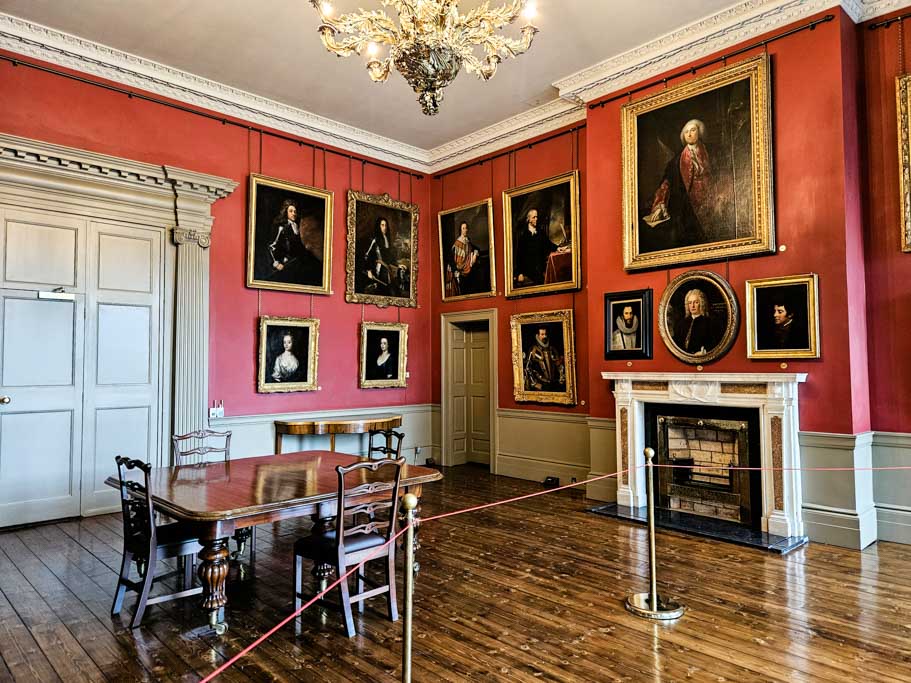
Dublin’s Historical Significance
Dublin’s rich past encompasses over a thousand years of transformative events, from Viking settlements to Georgian architectural developments and the struggle for Irish independence.
Medieval and Georgian Heritage
Dublin’s origins date back to the 9th century when Vikings established a settlement along the River Liffey. This Norse influence remains visible in street layouts and place names throughout the city center.
Medieval Dublin flourished around Dublin Castle and Christ Church Cathedral, both of which you can still visit today. The castle, originally built in the 13th century, served as the center of English administration for seven centuries.
The 18th century brought the magnificent Georgian era to Dublin. You’ll find elegant townhouses, perfectly proportioned squares, and wide streets from this period. Merrion Square and Fitzwilliam Square showcase this architectural style at its finest.
Impact of Irish Independence
The 1916 Easter Rising marked a pivotal moment in Dublin’s history, with rebels seizing key locations like the General Post Office on O’Connell Street. You can see bullet holes from this period on several city center buildings.
After the Irish War of Independence (1919-1921), Dublin became the capital of the newly formed Irish Free State. Government buildings were repurposed, with Leinster House becoming the seat of the new parliament.
The civil war that followed independence left deep scars on Dublin’s physical and social landscape. Many historic buildings bear the marks of this turbulent period.
Today, you can explore this revolutionary history at sites like Kilmainham Gaol, where leaders of the Easter Rising were executed, and the GPO Witness History museum, which documents the birth of modern Ireland through interactive exhibits.
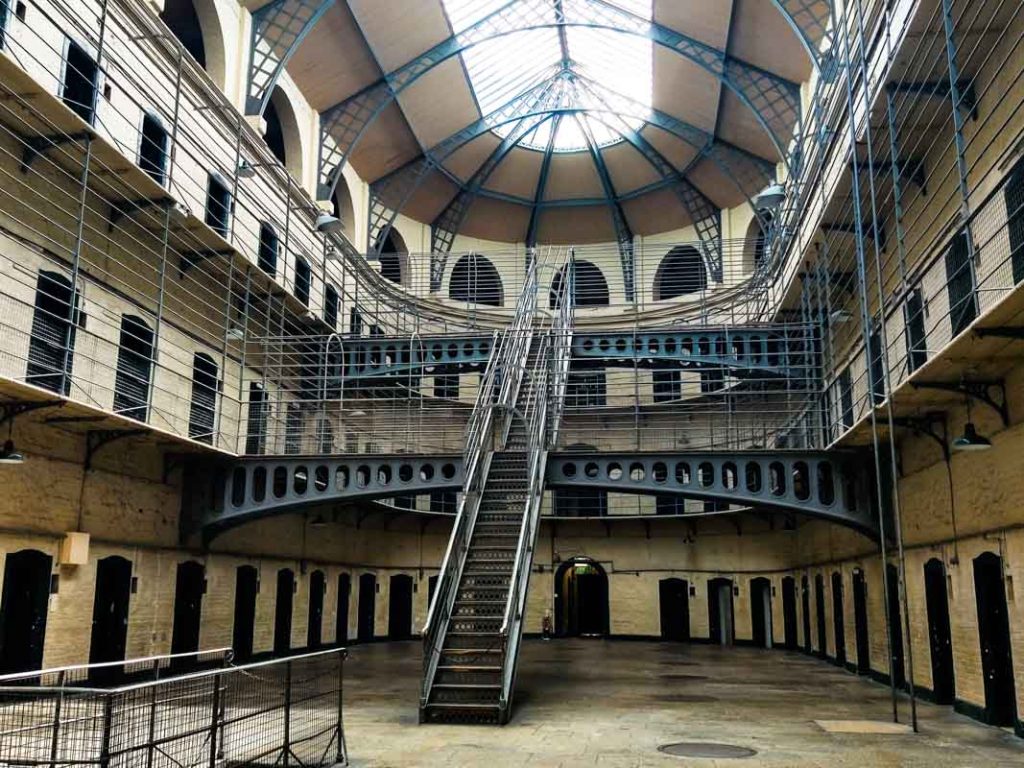
Lively Pub and Food Scene
Dublin’s culinary landscape has undergone an overhaul in recent years and seamlessly blends traditional Irish hospitality with contemporary gastronomy. The city offers exceptional drinking and dining experiences that have become central to its cultural identity.
Traditional Irish Pubs
Dublin’s pubs are more than just drinking establishments – they’re cultural institutions. The historic Temple Bar district houses numerous traditional pubs with live Irish music nightly, though locals often recommend exploring beyond this tourist hotspot, as drinks prices can be hefty. Not great if you’re on a budget in Ireland.
The Guinness experience is essential in Dublin, with the perfect pint requiring a proper six-step pour. Visit legendary establishments like The Brazen Head (Dublin’s oldest pub, dating to 1198) or O’Donoghue’s (a non-touristy Dublin pub), where famous folk group The Dubliners began their career.
For an authentic experience, try Kehoe’s or Mulligan’s, where you’ll find locals enjoying pints alongside visitors. Most pubs serve hearty Irish fare like beef and Guinness stew or seafood chowder.
Don’t miss the opportunity to engage with locals – Dubliners are known for their friendliness and storytelling prowess.
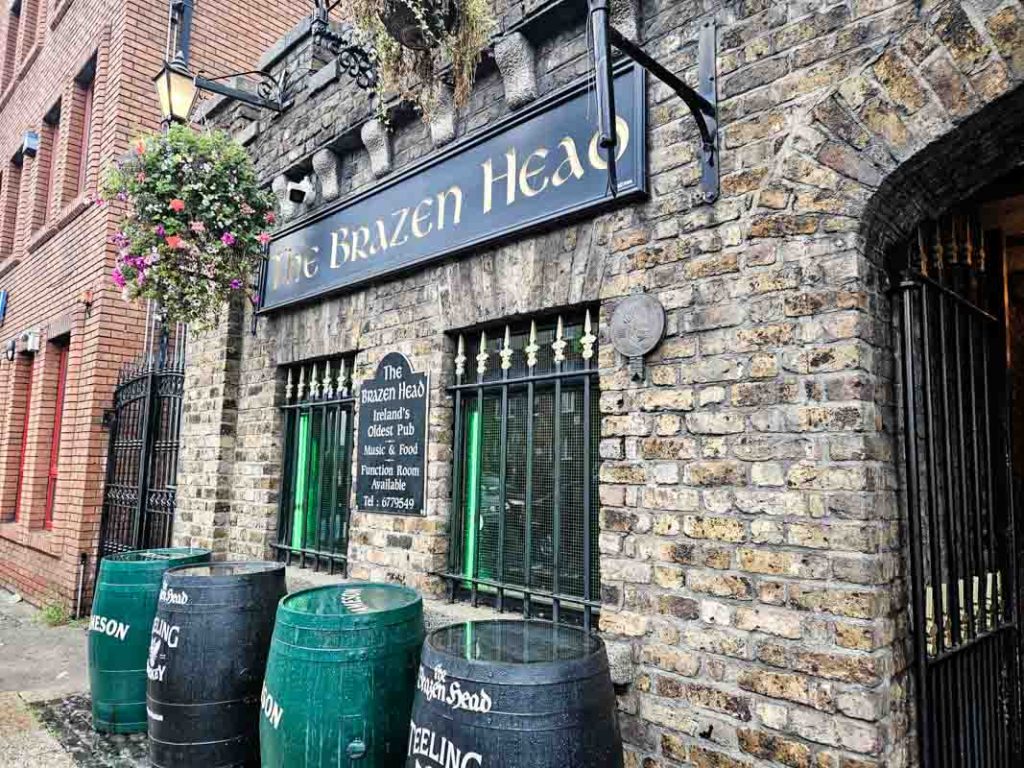
Modern Culinary Experiences
Dublin has evolved into a sophisticated food destination with innovative restaurants gaining international recognition. The city now boasts several Michelin-starred establishments, including Chapter One and The Greenhouse.
You’ll find excellent Irish produce showcased in contemporary ways. Local chefs pride themselves on farm-to-table philosophies, highlighting Ireland’s exceptional dairy, seafood, and grass-fed beef.
For food markets, Howth Market offers fresh seafood, while Temple Bar Food Market (Saturdays) provides artisanal produce and prepared foods. George’s Street Arcade houses unique food stalls with international flavors.
Coffee culture has exploded in Dublin with speciality cafés like 3FE and Clement & Pekoe serving expertly crafted beverages. For sweet treats, try traditional Irish baking at Queen of Tarts or innovative desserts at Cake Café.
Many restaurants offer early bird specials, providing excellent value at otherwise premium establishments.
Arts, Music, and Literature
Dublin’s artistic and cultural scenes offer visitors rich experiences spanning centuries of creative expression. The city’s contributions to literature are world-renowned, while its vibrant music venues continue to foster both traditional and contemporary talents.
Dublin’s Literary Legacy
Dublin holds UNESCO City of Literature status, a distinction earned through its remarkable literary heritage. You’ll find the influence of literary giants like James Joyce, Oscar Wilde, and Samuel Beckett throughout the city.
The Dublin Literary Pub Crawl combines cultural education with entertainment, taking you through pubs once frequented by famous writers. This popular tour offers dramatic performances of works by Dublin’s literary masters.
For dedicated literature fans, the Museum of Literature Ireland (MoLI) showcases interactive exhibits celebrating Irish storytelling traditions. Located in a historic building on St. Stephen’s Green, it offers insight into how Dublin shaped its literary figures.
Live Music and Performance Venues
Traditional Irish music thrives in Dublin, with pubs like The Cobblestone in Smithfield hosting nightly sessions. You can experience authentic performances where musicians gather informally to play traditional tunes.
Whelan’s on Wexford Street, a favorite haunt of mine during my college days, has launched numerous Irish bands and regularly features indie and alternative acts. This intimate venue offers an authentic glimpse into Dublin’s contemporary music scene.
For classical performances, the National Concert Hall presents world-class orchestras and soloists. The venue’s excellent acoustics and elegant surroundings enhance any musical experience.
The Abbey Theatre, founded by W.B. Yeats and Lady Gregory in 1904, remains Ireland’s national theater. You can watch both classic Irish plays and contemporary works in this historic institution that helped shape Irish cultural identity.
Street performers along Grafton Street often provide impromptu entertainment, with many famous musicians starting their careers busking here. Remember to put a few cents or a euro in their collection vessel if you enjoy their performance.
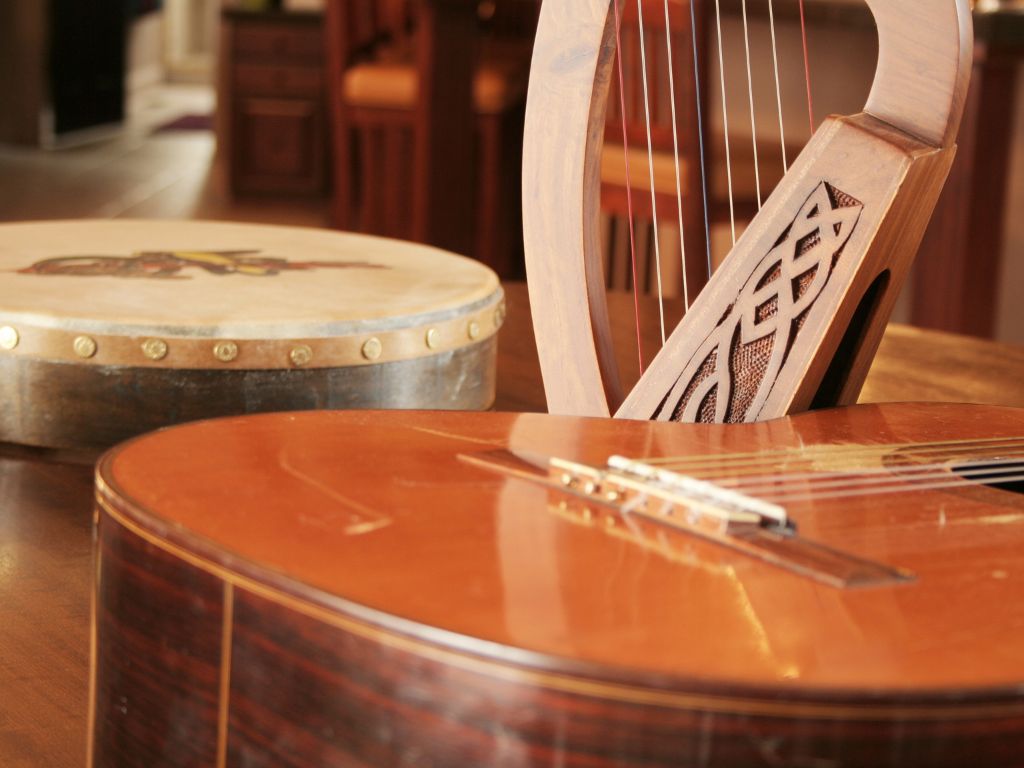
Local Events and Festivals
Dublin’s calendar brims with exciting cultural celebrations throughout the year. These events showcase the city’s vibrant character and provide visitors with authentic Irish experiences.
Food and Drink Festivals
Dublin hosts numerous food and drink festivals that highlight Ireland’s culinary renaissance. The Taste of Dublin, held each June in the Iveagh Gardens, brings together the city’s finest restaurants for a four-day celebration of gastronomy. You’ll find chef demonstrations, food stalls, and plenty of Irish craft beverages.
Dublin’s Oktoberfest celebration transforms George’s Dock into a Bavarian-style beer garden each September, offering international and local brews alongside traditional German foods.
For whiskey enthusiasts, Whiskey Live Dublin provides tastings from distilleries across Ireland and beyond. This event typically takes place in November at Dublin Castle, where you can sample premium spirits and attend masterclasses.
The Dublin Bay Prawn Festival in Howth celebrates seafood with cooking demonstrations and fresh catches from local waters.
St. Patrick’s Festival
St. Patrick’s Festival has evolved from a single-day parade into a five-day cultural extravaganza. The centerpiece remains the grand parade on March 17th, featuring elaborate floats, marching bands, and performers from around the world.
Throughout the festival, you’ll encounter street performances, live music, and traditional Irish dancing across the city. Temple Bar becomes particularly lively with outdoor concerts and special events.
The Festival Village in Merrion Square offers family-friendly activities, including crafts, storytelling, and games celebrating Irish heritage. Many buildings around Dublin are illuminated in green during this period, creating spectacular photo opportunities.
The festival also includes intellectual components like literary walks and talks about Irish culture and history.
Read this article to discover how to plan your St Patrick’s Day in Dublin.
Dublin Theatre Festival
Running since 1957, the Dublin Theatre Festival is Europe’s oldest specialized theater festival. It takes place annually in late September through mid-October, transforming Dublin into a stage for innovative performances.
You’ll find productions in venues ranging from the historic Abbey Theatre to unconventional spaces throughout the city. The festival showcases both Irish and international works, with a mix of classic plays and experimental performances.
Many productions incorporate elements of Irish literary tradition while addressing contemporary themes. The festival frequently features work from acclaimed playwrights alongside emerging talents.
Post-show discussions and workshops allow you to engage more deeply with the theatrical experience. The festival creates opportunities to see how Irish theater connects with global performance traditions.
Tickets sell quickly for popular shows, so booking in advance is highly recommended.
Outdoor Activities and Green Spaces
Dublin offers abundant green spaces and outdoor recreational opportunities that provide a refreshing reprieve from the hustle and bustle of the city. The city’s parks and coastal areas give visitors a chance to experience Ireland’s natural beauty without venturing far from the city center.
Phoenix Park
At 1,750 acres, Phoenix Park ranks among Europe’s largest enclosed urban parks. You’ll find expansive meadows, tree-lined avenues, and roaming herds of wild fallow deer that have inhabited the park since the 17th century.
The deer are often found in the woods and meadows near the Forty Acres, the Papal Cross and the pitches used for football and Gaelic matches.
The park is also home to Dublin Zoo, which houses over 400 animals from around the world.
For history enthusiasts, Áras an Uachtaráin (the Irish President’s residence) and the Victorian-era People’s Garden offer fascinating glimpses into Dublin’s past.
Sports enthusiasts can enjoy cycling paths, football pitches, and cricket grounds throughout the park. The park’s perimeter, spanning approximately 11 kilometers, provides an excellent running route with gentle terrain.
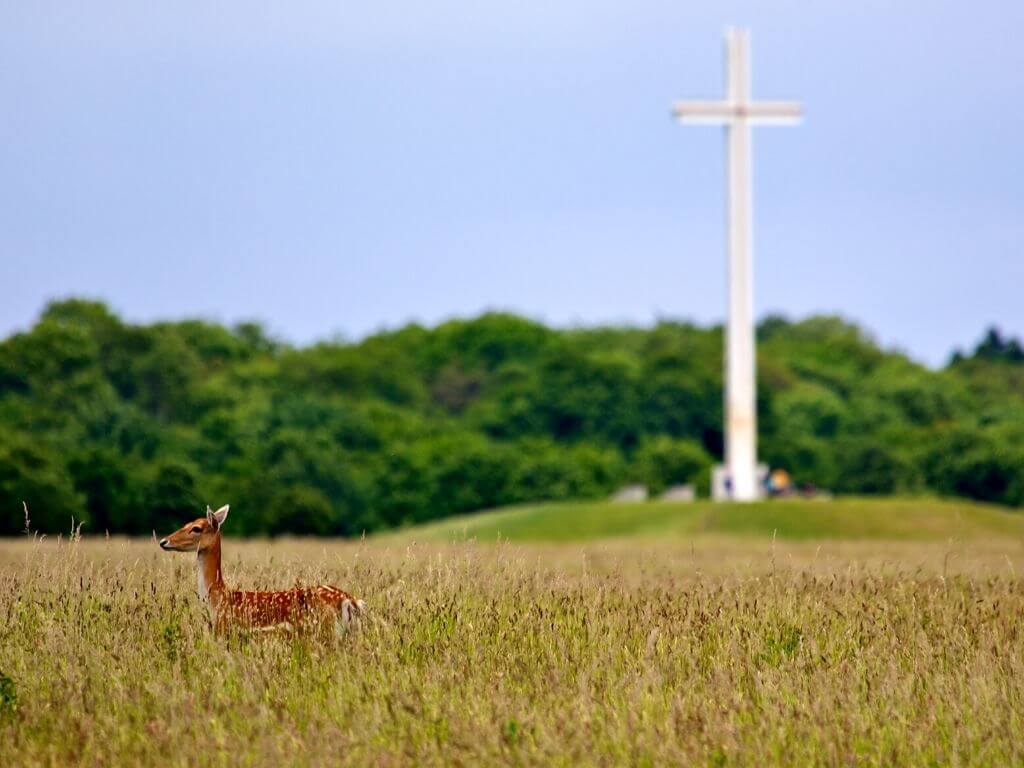
Coastal Walks and Beaches
Dublin’s coastal location offers spectacular seaside walks and beaches just minutes from the city center. The Howth Cliff Walk provides breathtaking views of Dublin Bay, Lambay Island, and, on clear days, the Wicklow Mountains.
Sandymount Strand, just 3 kilometers from the city center, offers a vast expanse of sand perfect for walking, particularly at low tide. Literary fans will recognize it from James Joyce’s “Ulysses.”
For swimming enthusiasts, the Forty Foot in Sandycove provides a historic sea-swimming spot open year-round. The braver visitors even take Christmas Day dips in the chilly waters!
Dollymount Strand on Bull Island offers 5 kilometers of sandy beach with kite-surfing opportunities and important bird habitats. The causeway to Bull Island provides easy access by foot, bike, or car.
Day Trips From Dublin and Nearby Attractions
Dublin’s enviable location means visitors can easily explore Ireland’s stunning coastal areas, ancient historical sites, and natural wonders within a short journey from the city center.
Howth and Dun Laoghaire
Howth, located just 30 minutes from Dublin by DART train, offers a perfect coastal escape. The Howth Cliff Walk provides breathtaking views of Dublin Bay and the Irish Sea, with trails suitable for various fitness levels. Fresh seafood is a must-try here—grab lunch at one of the harbor restaurants where you can sample the day’s catch.
Dun Laoghaire presents a different coastal charm, with its impressive harbor and Victorian promenade. The twin piers extend nearly a mile into the sea and make for a refreshing walk regardless of the weather. I’ve passed them many times on ferry trips to Wales. Don’t miss Teddy’s Ice Cream, a local institution since 1950, where you can enjoy a cone while watching sailing boats in the harbor.
Both towns are easily accessible on Dublin’s public transport network, making them perfect for half-day or full-day excursions.
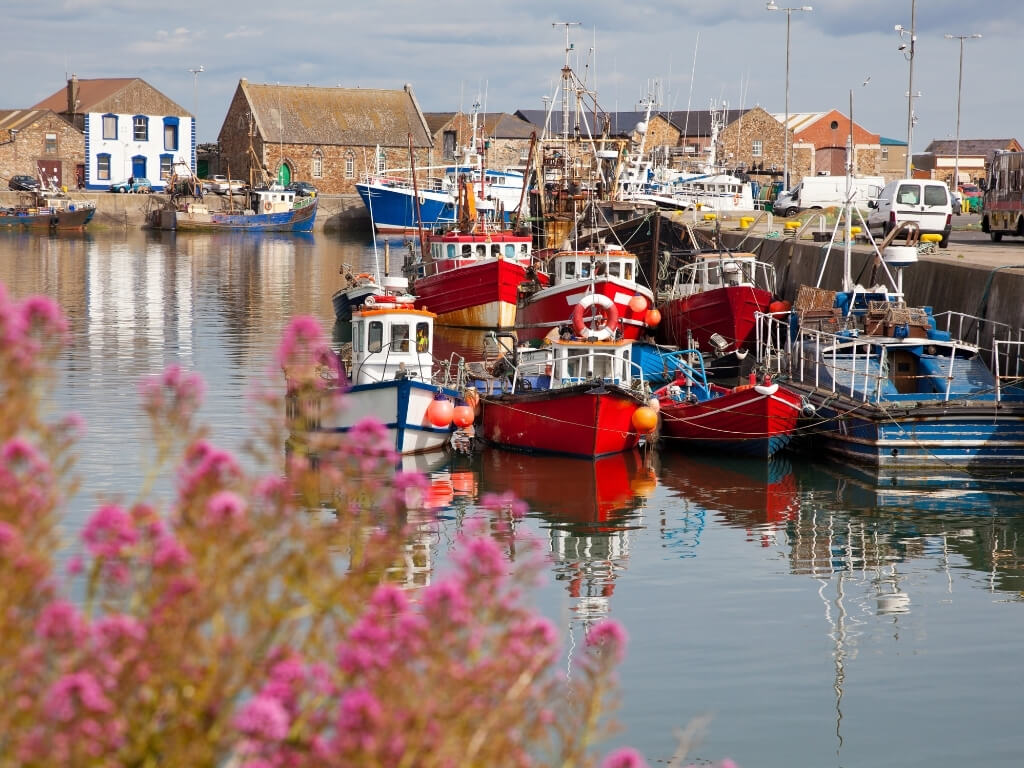
Newgrange and Hill of Tara
Newgrange, a UNESCO World Heritage site, dates back to 3200 BC—making it older than Stonehenge and the Egyptian pyramids. This prehistoric monument features a remarkable passage tomb designed to align with the winter solstice sunrise. Tours must be booked in advance through the Brú na Bóinne Visitor Centre.
The Hill of Tara, once the seat of Ireland’s High Kings, sits about 40 minutes from Dublin and close to Newgrange. This ancient ceremonial and political center offers panoramic views across the Meath countryside. The site features various earthworks and monuments spanning thousands of years of Irish history.
Consider booking an organized tour to visit both sites in one day, as public transport options are limited. The historical significance and mystical atmosphere make these locations truly unmissable.
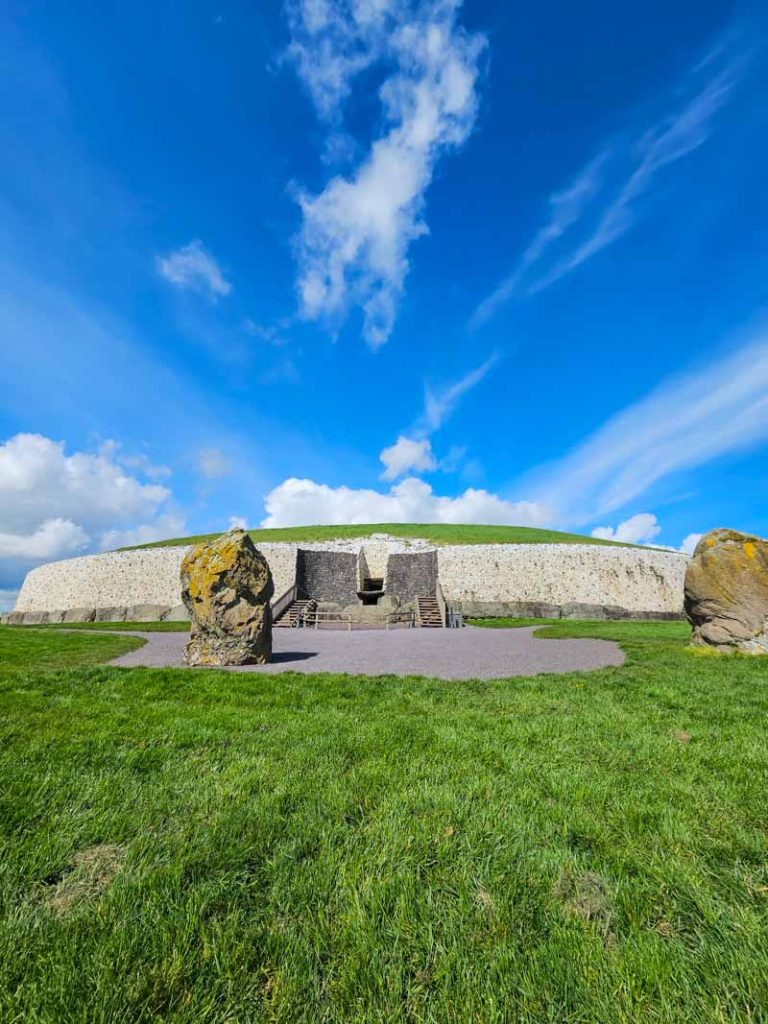
Glendalough and Wicklow Mountains
Glendalough, meaning “Valley of Two Lakes,” lies nestled in the Wicklow Mountains National Park about 90 minutes from Dublin. The 6th-century monastic settlement includes a well-preserved round tower, stone churches, and Celtic crosses set against a stunning backdrop.
Several walking trails cater to different abilities, from easy lakeside strolls to challenging mountain hikes. The Upper Lake area offers particularly photogenic views that capture Ireland’s natural beauty.
The Wicklow Mountains themselves provide a stark contrast to Dublin’s urban landscape. The Sally Gap drive takes you through heather-covered hills and past dark peat bogs. Movie buffs might recognize locations from films like “Braveheart” and “P.S. I Love You.”
Rental cars give you the most flexibility, but daily bus tours from Dublin also cover the main attractions in this region.
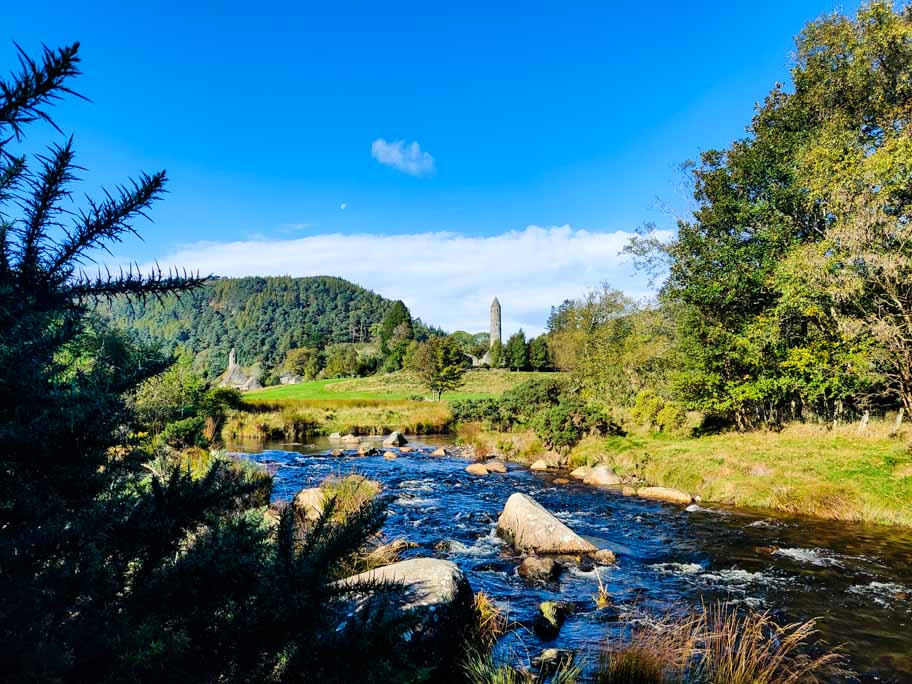
Ideal Duration and Itinerary Suggestions
Dublin deserves at least 2-3 days to properly experience its charm and history. This allows you to visit the key attractions without feeling rushed.
For a 1-2 day visit, focus on the essentials:
Day 1:
- Morning: Trinity College and the Book of Kells
- Afternoon: Dublin Castle and Christ Church Cathedral
- Evening: Temple Bar for dinner and traditional music
Day 2:
- Morning: Guinness Storehouse
- Afternoon: National Museum of Ireland
- Evening: Explore Georgian Dublin around Merrion Square
If you have 3-5 days to spend in Dublin, you can add these experiences:
- A literary tour following the footsteps of Joyce, Yeats, and Wilde
- Kilmainham Gaol
- Shopping on Grafton Street and Henry Street
- Visit to Phoenix Park and Dublin Zoo
- EPIC The Irish Emigration Museum and the Jeanie Johnston Famine Ship
- A day trip from Dublin
Here are my Dublin itineraries as examples:
Travel Tips for Visiting Dublin
Dublin offers a welcoming experience year-round, though certain seasons provide better weather and cultural opportunities. Navigating the city is straightforward with several efficient public transportation options.
Best Time to Visit
May through September offers Dublin’s most pleasant weather, with temperatures averaging 15-20°C (59-68°F). These months provide longer daylight hours, perfect for exploring the city’s outdoor attractions and parks. That said, you should still expect rain.
The summer months (June-August) coincide with peak tourist season, resulting in higher accommodation prices and more crowded attractions. Consider booking well in advance if visiting during this period.
For better deals and fewer crowds, the shoulder seasons of April-May and September-October are excellent alternatives. The weather remains relatively mild, and you’ll encounter fewer tourists at popular sites.
Dublin hosts numerous festivals throughout the year, including St. Patrick’s Day (March 17), Bloomsday (June 16), and the Dublin Fringe Festival (September). Planning your visit around these events can enhance your experience.
Read this article for a more comprehensive overview of the best time to visit Dublin.
Public Transportation Overview
Dublin’s public transport system is comprehensive and tourist-friendly. The Leap Card offers the most cost-effective way to use public transportation, providing discounted fares on buses, trams, and trains. I have one for myself and my son, and they are super easy to use alongside the app.
Dublin Bus serves the entire city with extensive routes. While not the fastest option during rush hours, it reaches areas not covered by rail services. The fare depends on how many stages (sections) you travel.
The Luas tram system features two lines (Red and Green) that connect many key attractions. It’s fast, reliable, and runs frequently throughout the day.
DART (Dublin Area Rapid Transit) trains are ideal for coastal excursions to nearby villages like Howth and Bray. These scenic routes offer beautiful views of Dublin Bay.
For late nights, Dublin’s taxi services are plentiful and can be hailed on the street or at designated taxi ranks throughout the city.
For a more comprehensive guide, read my article about getting around Dublin.
Challenges, Considerations and Potential Drawbacks
While Dublin offers numerous attractions and experiences, visitors should be aware of certain practical aspects that might impact their trip.
Cost Considerations
Dublin ranks among Europe’s more expensive capital cities. Accommodation in central areas typically starts at €150-200 per night for mid-range hotels, with prices climbing significantly during summer and special events.
The Temple Bar district, while culturally vibrant, comes with premium pricing. A pint of beer here can cost €7-9 compared to €5-6 in less touristy neighborhoods.
Dining expenses add up quickly, too. Expect to pay €15-25 for main courses at mid-range restaurants. Budget-conscious travelers should consider self-catering options and exploring residential areas like Rathmines or Stoneybatter for more affordable meals.
Public transportation costs can be managed with visitor leap cards, offering significant savings compared to single tickets.
Weather and Seasonality
Dublin’s climate is notoriously changeable, with the possibility of experiencing all four seasons in a single day. The city receives an average of 150+ rainy days annually, so packing a waterproof jacket is essential regardless of when you visit.
Winter months (November-February) bring shorter days with darkness falling by 4:30 pm and temperatures hovering between 2-8°C. This can limit sightseeing opportunities.
Late spring (May) and early fall (September) often provide the most pleasant balance of moderate temperatures (13-18°C) and manageable rainfall. Summer offers longer daylight hours but doesn’t guarantee sunshine.
Irish locals often say, “There’s no such thing as bad weather, just inappropriate clothing.” Layering is your best strategy year-round.
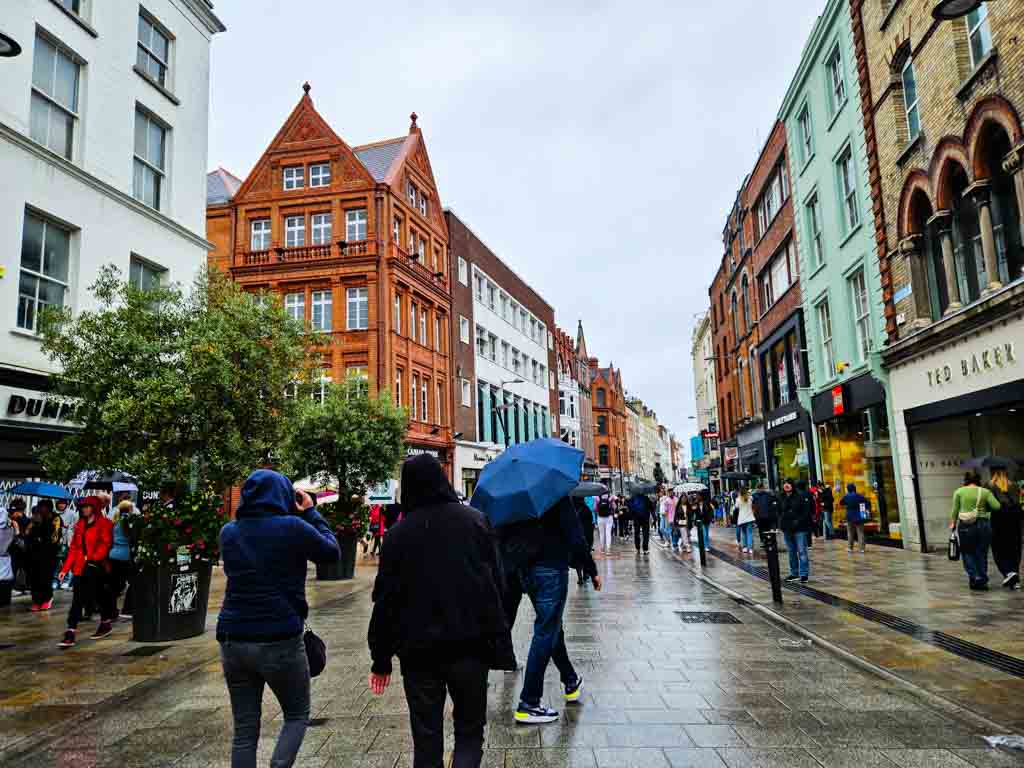
Tourist Crowds
Dublin experiences its heaviest tourist influx during summer months (June-August) and around St. Patrick’s Day (mid-March). Popular attractions like the Guinness Storehouse can have wait times exceeding 90 minutes during these peak periods.
Bank holiday weekends see domestic tourism surge, further crowding city center areas and driving up accommodation rates by 30-50%.
Booking accommodations 3-4 months in advance is highly recommended during high season. Many attractions now offer timed-entry tickets online, which can save considerable waiting time.
Early mornings (before 10 am) and weekday visits generally provide more breathing room at major sites.
Final thoughts if Dublin worth visiting?
So, is Dublin worth visiting? Absolutely.
This walkable, welcoming city offers a rich blend of history, culture, and character. From iconic landmarks like Trinity College and the Guinness Storehouse to its lively pub scene and evolving food culture, Dublin packs a lot into a compact space.
Visit in spring or autumn for smaller crowds and better value, and don’t miss the chance to explore beyond the main sights. Plus, Dublin makes the perfect base for day trips to nearby gems like Howth, Malahide Castle, or the Wicklow Mountains.
Whether you’re here for a quick stop or a deeper dive, Dublin offers more than enough to make your visit worthwhile.
Before you go, read these helpful articles:
- Is There Uber in Dublin?
- How to Get Around Dublin
- Is Dublin Safe to Visit?
- Top 10 Dublin Attractions to Visit
Pin this for later!


